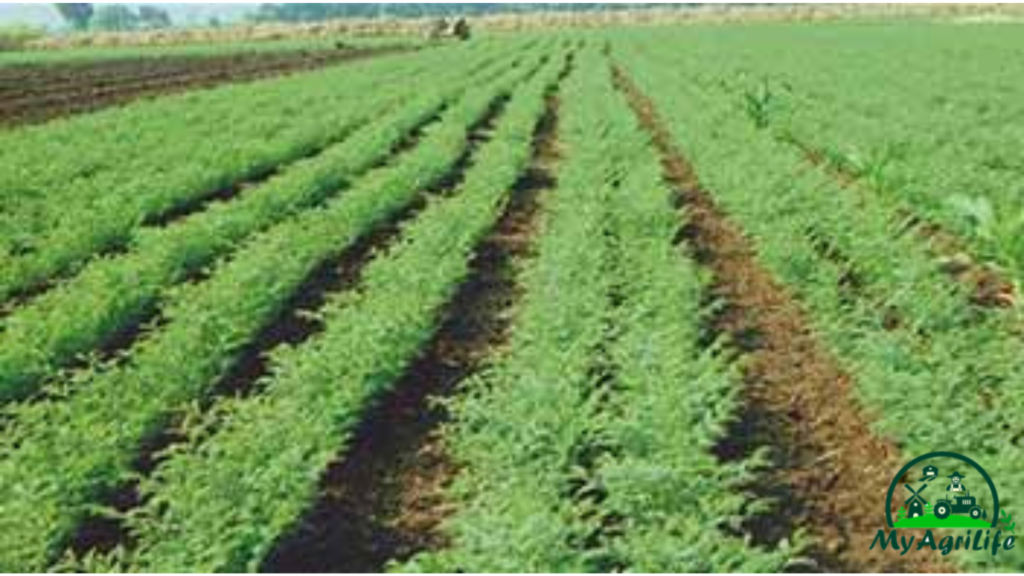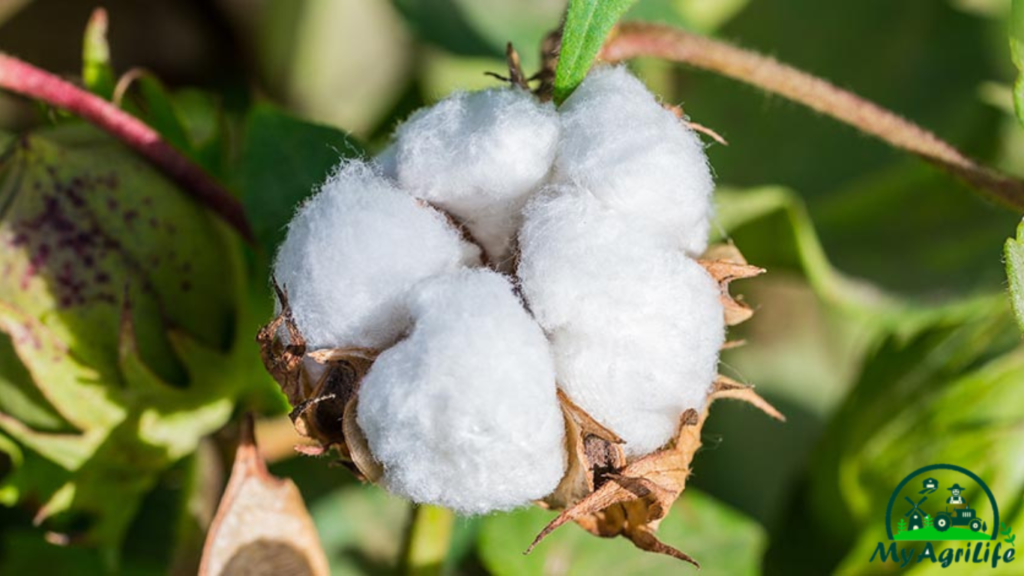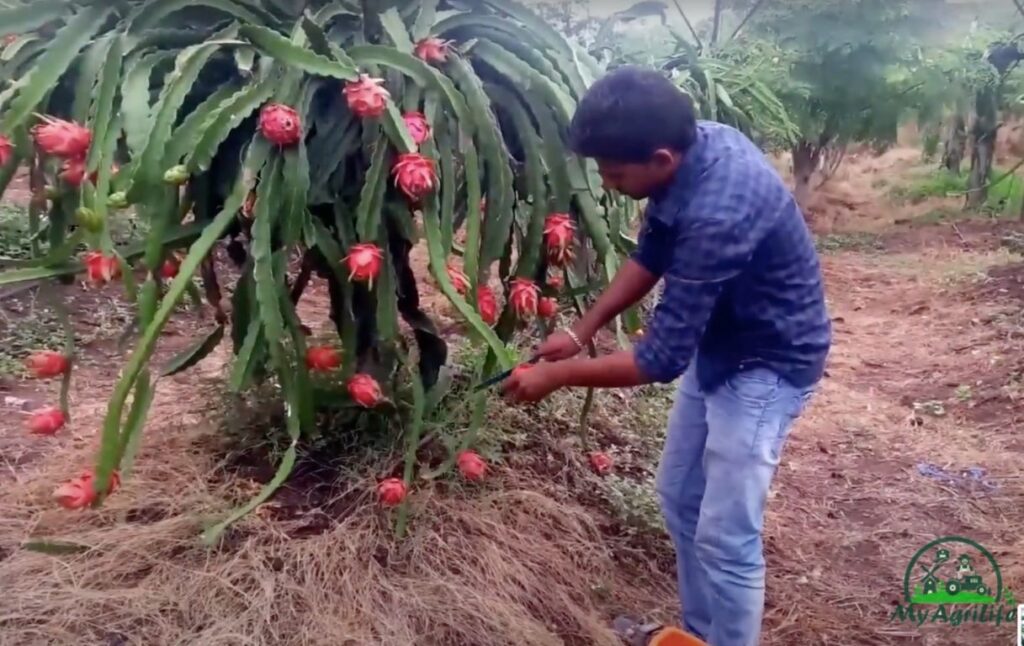
Gram, also known as chickpea, is an important food crop grown in India and other parts of the world. It is a member of the legume family and is a rich source of protein, fiber, vitamins, and minerals. The two main types of gram are desi and kabuli, with desi being the more common variety grown in India.
Gram is used in a variety of dishes such as curries, stews, salads, and snacks, and is also processed into flour for use in traditional Indian foods like chana dal and besan.
Gram farming involves several important steps, including seed selection, land preparation, crop spray and fertilization, weeding and irrigation, harvesting, and storage. Proper care and attention at each stage of the farming process can help ensure a successful and profitable harvest.
Seed Specification for Gram
1.Seed rate: The recommended seed rate for gram is 80-100 kg per hectare.
2.Seed treatment: Treating gram seeds with bioagents like Pseudomonas fluorescens, Trichoderma viride, and Rhizobium cultures can increase germination rate and provide protection against soil-borne diseases.
3.Seed size: The size of the gram seed can vary, and it is generally preferred to use seeds that are uniform in size, medium to large.
4.Seed purity: The seed should be pure and free from any other crop or weed seeds.
5.Seed moisture content: The seed moisture content should be below 10 percent to ensure good germination and storage.
6.Seed dormancy: Gram seeds are non-dormant, meaning they can be sown directly after harvest.
7.Seed vigor: Seed vigor can be improved by priming with polyethylene glycol (PEG) or potassium nitrate.
8.Seed treatment with insecticides and fungicides: Gram seeds can be treated with insecticides and fungicides before sowing to prevent insect and disease infestations. However, it is recommended to use natural and eco-friendly options instead of chemical treatments.
Land Preparation for Gram
1.Ploughing: The land should be ploughed two to three times to make it fine tilth and to mix the organic matter well in the soil.
2.Levelling: After ploughing, the land should be levelled properly to avoid waterlogging and to ensure uniform irrigation.
3.Seed rate and spacing: The recommended seed rate for gram is 80-100 kg per hectare. The spacing between rows should be 30-45 cm and between plants, it should be 10-15 cm.
Soil Health for Gram
1.Soil testing: Before sowing the seeds, it is important to test the soil to determine its nutrient status. This will help in deciding the quantity of fertilizers and micronutrients to be added.
2.pH level: The pH level of the soil should be between 6.0 to 7.5. If the soil is too acidic or too alkaline, it should be corrected by adding lime or sulphur.
3.Organic matter: The organic matter content of the soil should be increased by adding farmyard manure or compost.
4.Micronutrients: The micronutrients like zinc, boron, and iron should be added to the soil if their levels are found to be deficient in the soil test.
5.Soil drainage: The soil should be well-drained to avoid waterlogging which can cause root rot and other diseases in gram plants. If the soil is heavy clay or compacted, it should be loosened by adding sand or other organic matter.
Crop Spray and Fertilizer Specification for Gram

1.Nitrogen fertilizers: Gram requires a good supply of nitrogen for its growth and development. Nitrogen fertilizers like urea, ammonium sulphate, and calcium ammonium nitrate can be applied as per the soil test results. The recommended dose of nitrogen is 20-25 kg per hectare at the time of sowing, and 30-35 kg per hectare as a top dressing after 30-35 days of sowing.
2.Phosphorus fertilizers: Phosphorus is required for root development, early plant growth, and flowering in gram. Superphosphate or triple superphosphate can be applied at the time of sowing at a rate of 50 kg per hectare.
3.Potassium fertilizers: Potassium is important for grain development, disease resistance, and plant growth. Muriate of potash can be applied as a basal dose at the rate of 25-30 kg per hectare.
4.Micronutrients: The micronutrients like zinc, boron, and iron should be added as per the soil test results. The deficiency of these micronutrients can be corrected by applying zinc sulphate, borax, and ferrous sulphate.
5.Crop spray: Gram plants are prone to various fungal and bacterial diseases. To control these diseases, crop spray should be done at regular intervals. Copper oxychloride or Bordeaux mixture can be sprayed to control fungal diseases like gram blight and powdery mildew. Streptocycline or kasugamycin can be sprayed to control bacterial diseases like bacterial blight.
6.Insecticides: Gram plants are also attacked by various pests like pod borer, aphids, and jassids. These pests can be controlled by spraying insecticides like chlorpyrifos, carbaryl, and monocrotophos. It is important to follow the recommended dosage and safety measures while spraying these chemicals.
Weeding and Irrigation for Gram

1.Weeding: Gram crop should be kept free from weeds for proper growth and development. Weeds compete for nutrients, water, and sunlight with the gram plants. Manual weeding or using a hand hoe can be done to remove weeds before the crop reaches the flowering stage. Chemical weeding can also be done using herbicides like pendimethalin, metribuzin, and sulfosulfuron. However, it is important to follow the recommended dosage and safety measures while using herbicides.
2.Irrigation: Gram crop requires adequate water for its growth and development. Irrigation should be done at regular intervals depending upon the soil type, climate, and stage of crop growth. In the early stages of growth, frequent light irrigations are required to maintain soil moisture. Later, the frequency of irrigation can be reduced. Generally, 5-7 irrigations are required for the gram crop. Drip irrigation or sprinkler irrigation can also be used to conserve water and improve water use efficiency.
Harvesting and Storage of Gram
1.Harvesting: Gram crop is ready for harvesting after 90-100 days of sowing when the pods turn yellow and dry. The plants should be uprooted carefully without damaging the pods. The pods should be left to dry in the field for a few days before threshing. Threshing can be done manually or using a threshing machine. The grains should be separated from the pods and other plant debris.
2.Storage: The grains should be cleaned and dried to a moisture content of around 10-12% before storage. The dried grains can be stored in gunny bags or jute bags. The bags should be stored in a clean and dry place to prevent damage from pests and moisture. Fumigation can be done using phosphine tablets or aluminum phosphide to control insect pests. The storage area should be well ventilated to prevent the build-up of moisture and to maintain the quality of the grains. The stored grains should be checked periodically for any signs of damage or pests.
conclusion
Gram farming is an important agricultural practice in many parts of the world, especially in Asia, Africa, and Latin America. It is a high-protein and high-fiber crop that is easy to cultivate and provides numerous health benefits. Gram cultivation requires proper land preparation, soil health management, crop spray and fertilizer application, weeding, irrigation, and harvesting techniques.
The choice of seed, the amount of fertilizer, the irrigation and weeding schedule, and the harvesting techniques are all critical factors in achieving a successful crop yield. Farmers should also monitor the crop for pests and diseases and take appropriate action when necessary.
With proper care and attention, gram farming can be a profitable and sustainable agricultural enterprise for small-scale farmers. The crop can be used in a variety of dishes, including curries, stews, salads, and snacks, making it a versatile ingredient in many culinary traditions.









